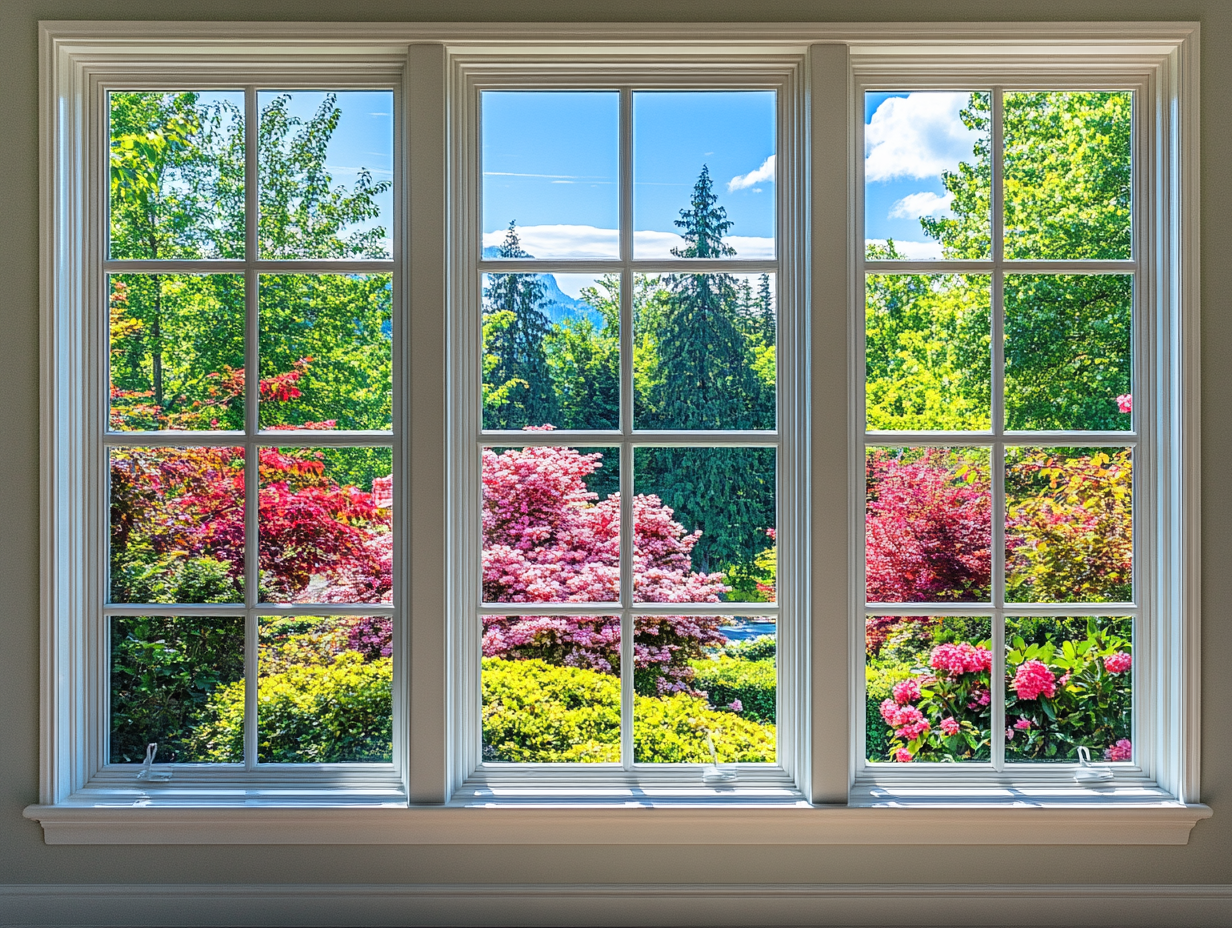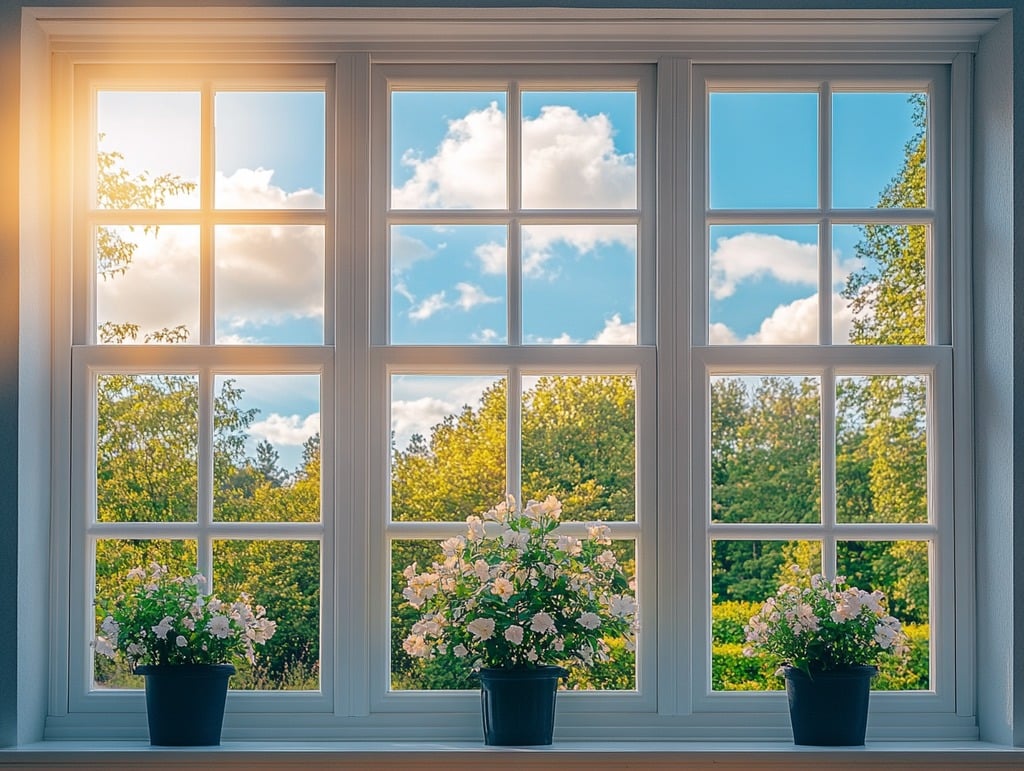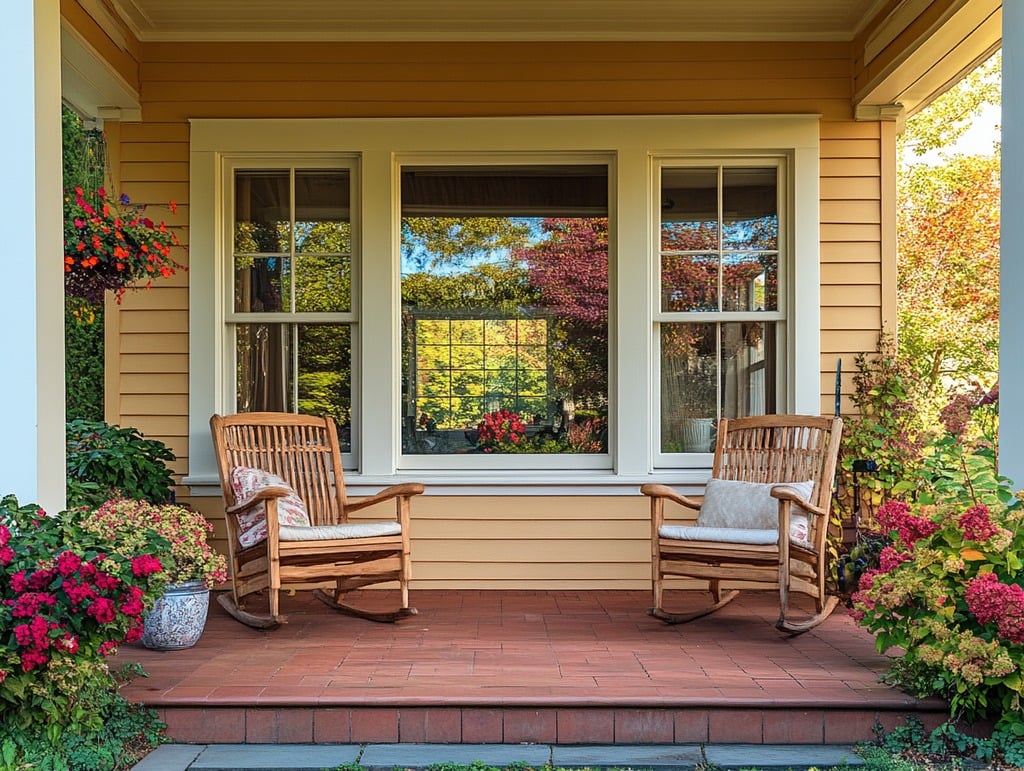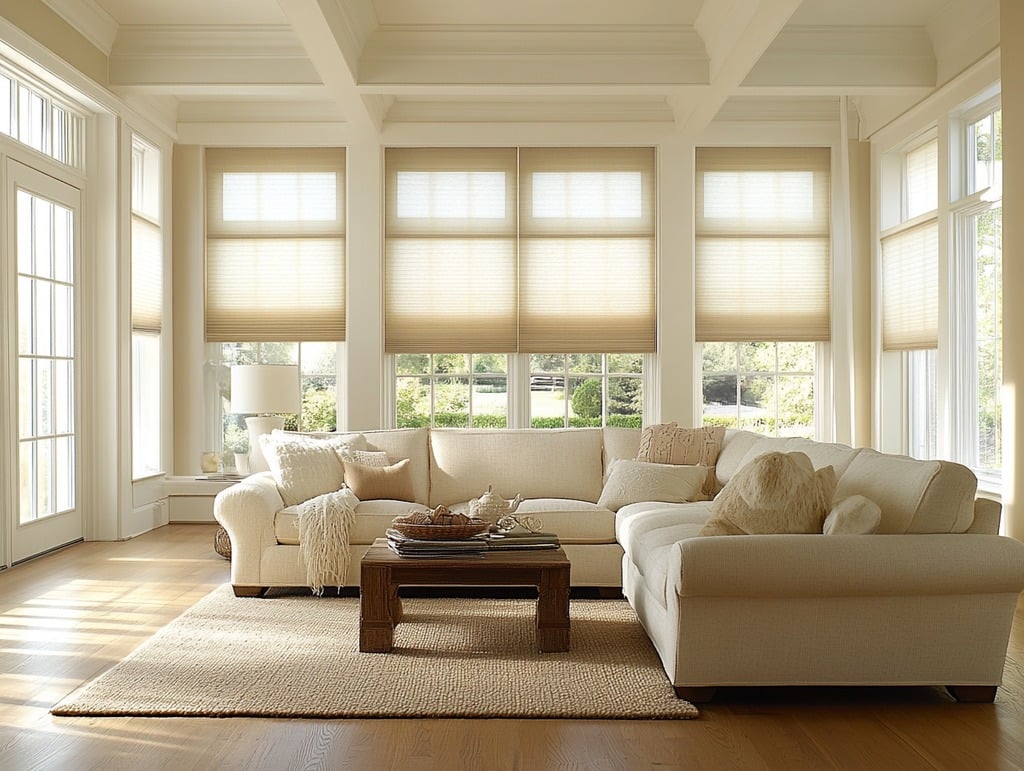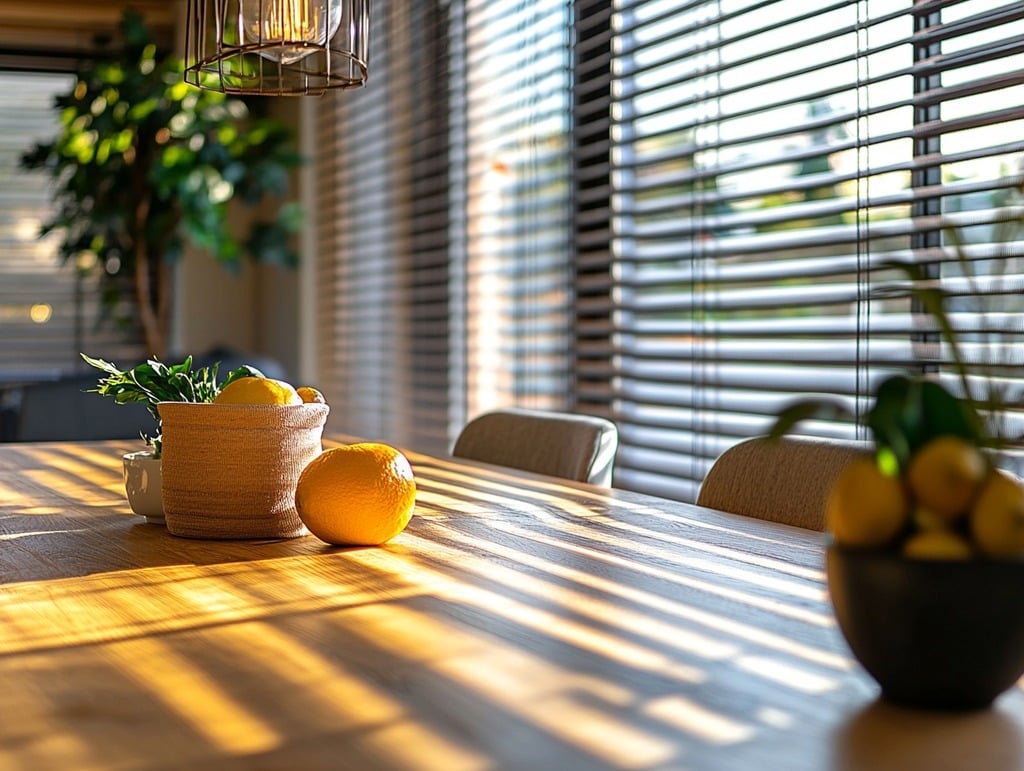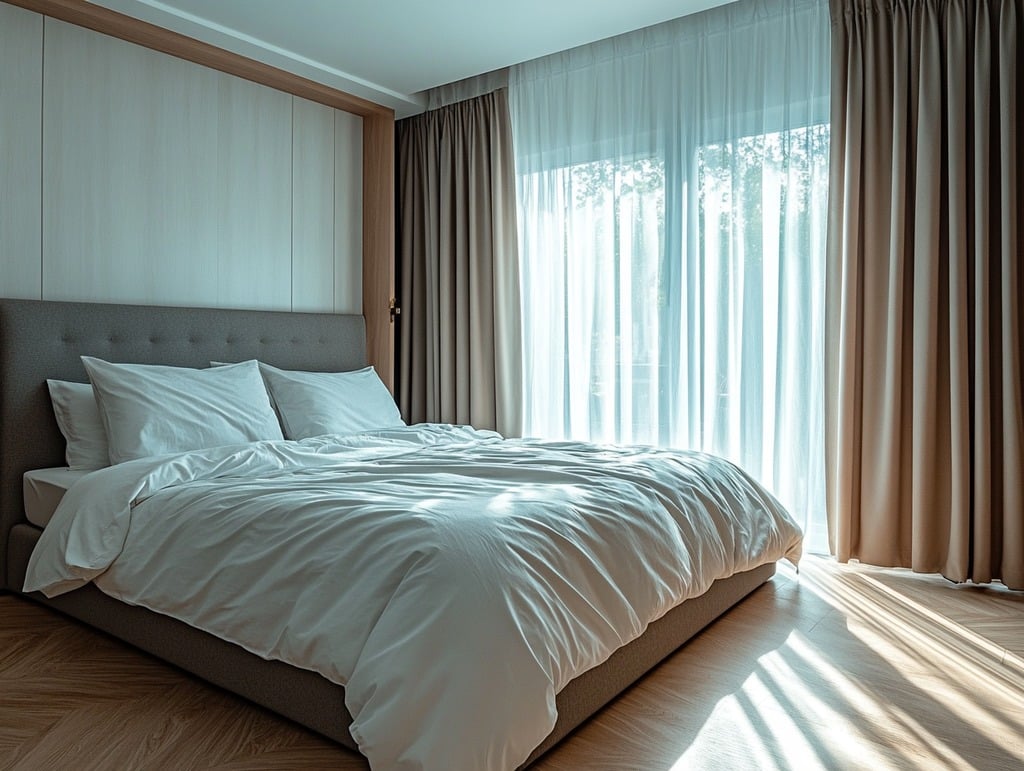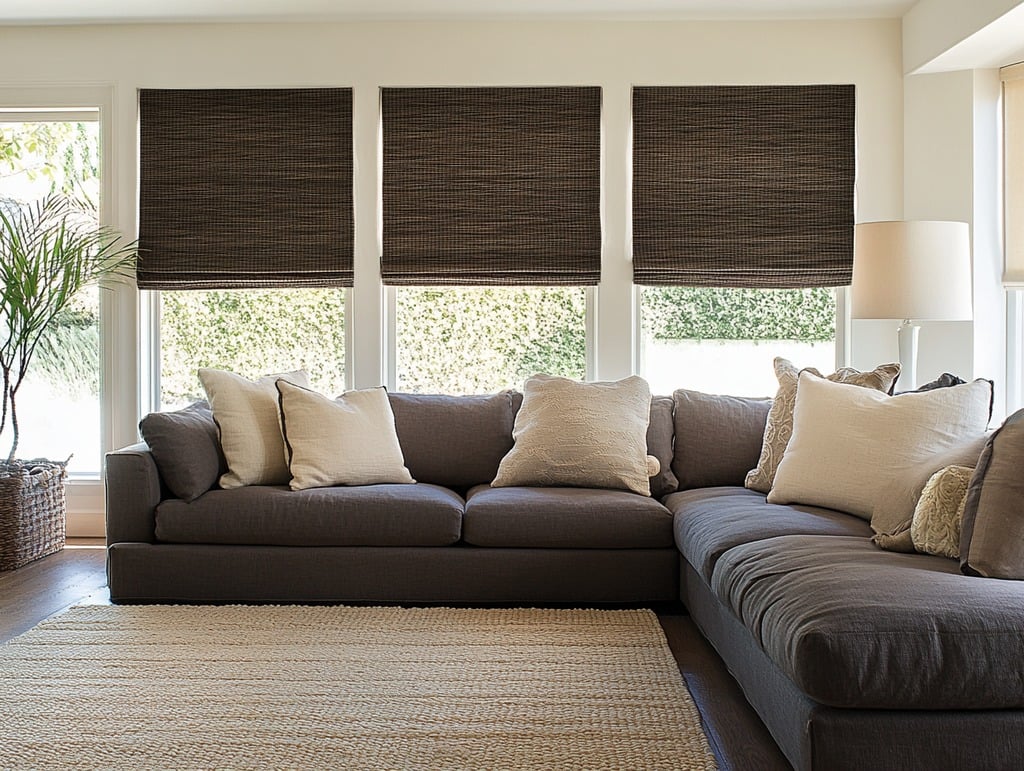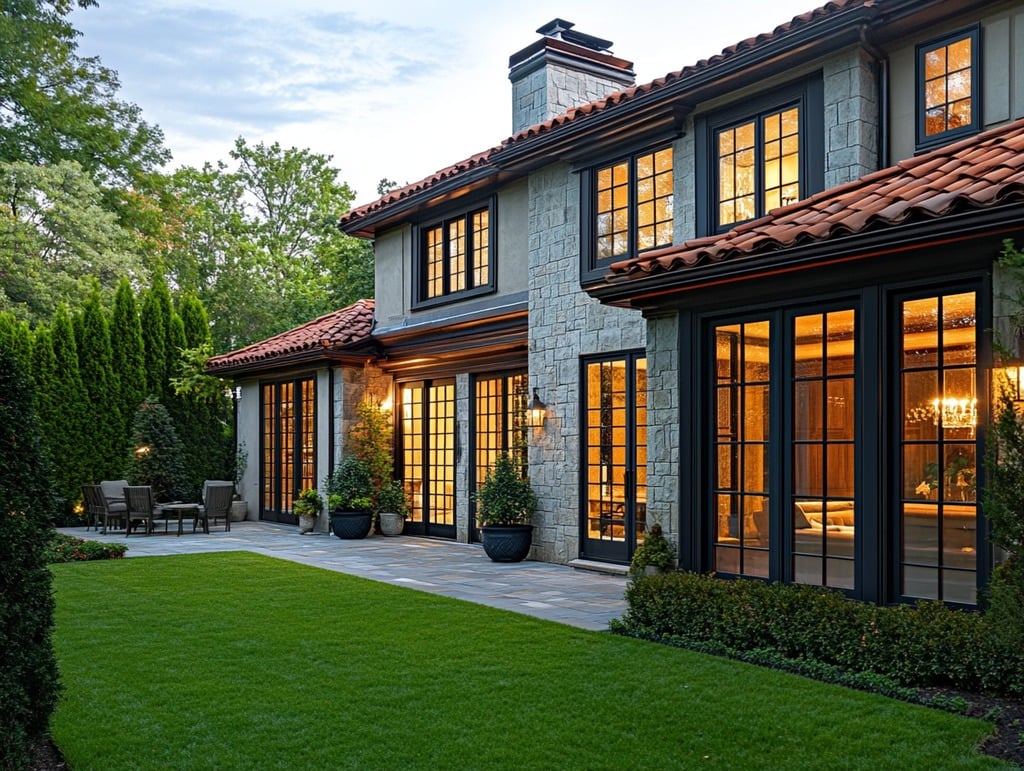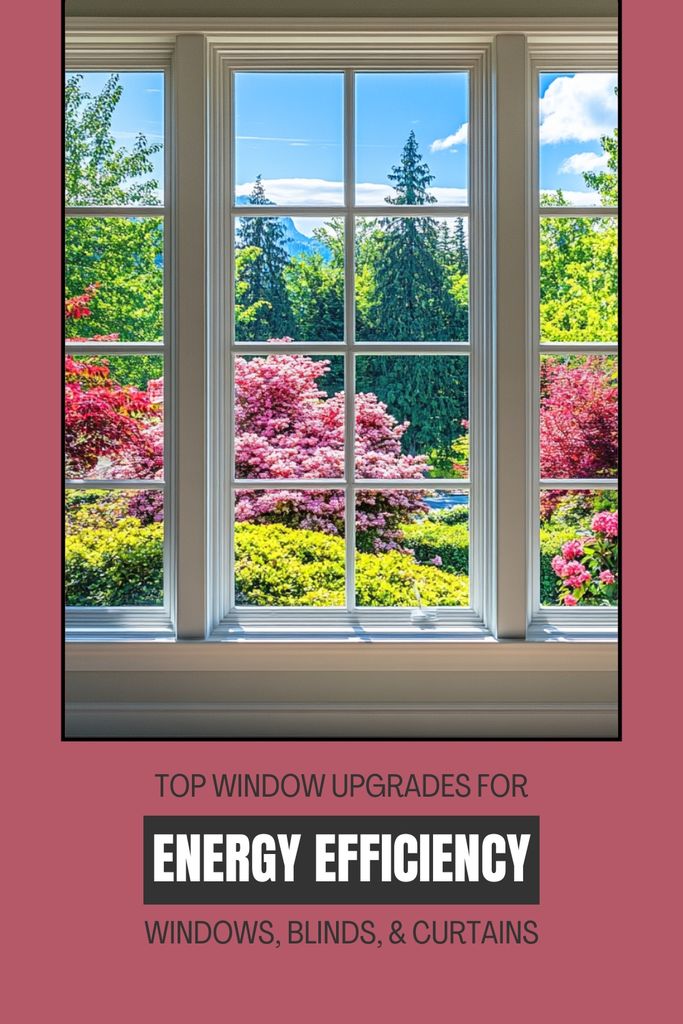Your windows can make or break your home’s energy performance. In fact, about 25-30% of residential heating and cooling energy use is due to heat gain and loss through windows. If you’re noticing drafts in winter or high cooling costs in summer, it’s likely your windows aren’t doing their job well.
Upgrading to energy-efficient windows and pairing them with the right treatments can improve insulation, reduce your energy bills, and help create a more comfortable home environment. Let’s look at the best options to consider.
1. Energy-Efficient Window Options
a) Double- or Triple-Pane Windows
Single-pane windows are highly inefficient, allowing too much heat transfer between your home and the outdoors. Double- or triple-pane windows, however, add extra layers of glass, often with insulating gas like argon or krypton sandwiched between them, to reduce heat transfer.
Benefits:
- Significant reduction in heat loss and gain.
- Better insulation means lower energy costs year-round.
- Noise reduction for a quieter home environment.
b) Low-E Glass Windows
Low-emissivity (Low-E) glass is specially coated to reflect infrared light, keeping heat inside in winter and outside in summer. Low-E coatings can significantly improve your window’s energy efficiency without affecting visibility.
Benefits:
- Reduces UV rays, protecting furniture from fading.
- Maintains consistent indoor temperatures.
- Reduces heating and cooling costs.
c) Argon- or Krypton-Filled Windows
Adding inert gases like argon or krypton between window panes provides an extra layer of insulation. These gases are denser than air, reducing thermal conductivity and enhancing the window’s insulation value.
Benefits:
- Improves overall energy efficiency.
- Reduces condensation on windows.
- Minimizes heat loss, especially in colder climates.
d) Window Frames Matter Too
It’s not just about the glass; the frames you choose also impact energy efficiency. Some frame materials are naturally more insulating than others. Here’s a quick breakdown:
- Vinyl: Affordable, weather-resistant, and provides good insulation.
- Fiberglass: Strong, durable, and has excellent insulation properties.
- Wood: Great insulator, but requires maintenance and may not be as weather-resistant.
- Aluminum: Not as insulating as other materials but durable and affordable.
Tip: Consider composite frames, which combine materials like wood and vinyl, to get the best of both worlds.
2. Window Treatments for Energy Efficiency
Even the best windows can benefit from a little extra help. Window treatments like blinds and curtains provide additional insulation and control over light and temperature.
a) Cellular (Honeycomb) Shades
Cellular shades, also known as honeycomb shades, are among the best options for energy efficiency. Their unique structure creates pockets of air that act as insulation, helping to keep your home warm in winter and cool in summer.
Benefits:
- Excellent for insulation, reducing heat loss by up to 40%.
- Blocks out light and provides privacy.
- Available in various colors and opacities to suit your design.
b) Thermal Curtains
Thermal curtains are made with insulating materials that help block out cold air in winter and prevent heat from entering during summer. They can make a noticeable difference in your room’s temperature, especially if you have drafty windows.
Benefits:
- Reduces heat transfer significantly.
- Affordable and easy to install.
- Available in various styles to match any decor.
c) Insulated Blinds
Insulated blinds, especially those with multiple layers, are designed to keep your home’s temperature stable. These blinds often come with additional padding or reflective materials, making them an energy-efficient choice.
Benefits:
- Helps reduce energy costs by blocking heat and cold.
- Offers great control over light and privacy.
- Comes in various styles, including roller, Roman, and vertical blinds.
d) Blackout Curtains
Though commonly used to darken rooms, blackout curtains also have thermal benefits. Their thick, dense fabric helps insulate against outside temperatures, making them a practical choice for improving energy efficiency.
Benefits:
- Blocks up to 99% of light, great for bedrooms and media rooms.
- Reduces heat gain in summer and heat loss in winter.
- Adds an extra layer of privacy.
e) Exterior Window Treatments
Sometimes the best way to control indoor temperatures is by blocking heat before it reaches your windows. Exterior window treatments like awnings, shutters, and solar screens can prevent sunlight from directly heating your windows, keeping the interior cooler.
Benefits:
- Reduces solar heat gain by up to 65% on south-facing windows and 77% on west-facing windows.
- Protects windows from weather damage.
- Can add curb appeal and a unique design element to your home.
3. Combination Tips for Maximum Efficiency
While each of these upgrades has its own benefits, combining them can give you the best energy savings. Here’s how to layer your approach:
- Upgrade Windows + Add Cellular Shades: Install double- or triple-pane windows with Low-E glass, then add cellular shades for maximum insulation. This combo works wonders in both cold and hot climates.
- Use Low-E Windows + Thermal Curtains: Pair Low-E windows with thermal curtains to reduce heat transfer and maintain a consistent indoor temperature.
- Exterior Awnings + Blackout Curtains: In hot climates, installing exterior awnings along with blackout curtains can drastically cut down on cooling costs.
- Krypton-Filled Windows + Insulated Blinds: For colder regions, krypton-filled windows combined with insulated blinds provide high-level insulation, keeping warmth inside during chilly months.
By strategically combining upgrades, you can enjoy more consistent indoor temperatures and reduce the burden on your HVAC system.
Choosing the Right Upgrade for Your Home
When deciding on window upgrades, consider factors like your climate, budget, and design preferences. Here are some quick tips to help you choose the best option:
- Climate: In colder regions, focus on insulation with double- or triple-pane windows, krypton fills, and thermal curtains. For hot climates, look for Low-E glass and exterior shades to block heat.
- Budget: If you’re on a tight budget, start with window treatments like cellular shades or thermal curtains, which provide a good level of insulation without a major investment.
- Aesthetics: Choose window treatments that match your home decor, like elegant Roman shades for a classic look or sleek roller blinds for a modern touch.
FAQs About Energy-Efficient Window Upgrades
1. How much can I save with energy-efficient windows?
Upgrading to energy-efficient windows can save you anywhere from 10-25% on your heating and cooling bills. Exact savings depend on factors like your home’s location, window type, and insulation level.
2. Are energy-efficient window treatments really effective?
Yes! Cellular shades, thermal curtains, and insulated blinds can all reduce heat loss in winter and minimize heat gain in summer, significantly lowering energy usage.
3. Do I need to replace all my windows to see energy savings?
Not necessarily. If replacing all your windows isn’t feasible, consider upgrading the ones with the most sun exposure or adding energy-efficient treatments to enhance their insulation.
4. How long does it take to recoup the cost of new energy-efficient windows?
Typically, homeowners can expect to recoup their investment in energy-efficient windows within 5-10 years through energy savings. However, this varies based on local energy costs and the type of windows installed.
Final Thoughts
Investing in energy-efficient windows and window treatments is one of the smartest moves you can make to create a comfortable, eco-friendly home. Whether you’re upgrading to Low-E glass, adding cellular shades, or installing exterior shutters, each upgrade brings you closer to lower energy bills and a smaller carbon footprint. Not to mention, these upgrades can enhance your home’s value and aesthetic appeal.
By combining high-performance windows with insulating blinds or curtains, you’ll stay cozy in winter and cool in summer—all while keeping your energy costs down. So, if you’re tired of drafty winters and stuffy summers, it’s time to consider these energy-efficient window upgrades.

